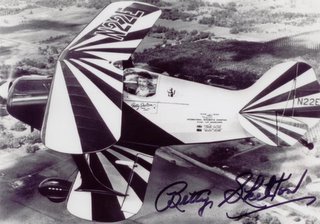Wednesday, October 24, 2012
Friday, December 18, 2009
ACM Thomas Neville Stack KCB CVO AFC 1919–1994

Airspeed AS.8 Viceroy, G-ACMU was crewed by Captain T. Neville Stack & S.L. Turner in the 1934 MacRobertson Air Race
Stack was born on 19 October 1919 the son of aviation pioneer T.N. Stack. He joined the Royal Air Force in 1935 as a flight cadet at RAF College Cranwell. He gained a permanent commission on 29 July 1939[1] and passed out of the College with the Sword of Honour. He spent his war service with Coastal Command serving on flying boats until transferring to Transport Command in the late 1950s. Including a tour as Deputy Captain of the Queen's Flight.
In 1967 he became commandant of the RAF College Cranwell before moving on in 1970 as a representative with CENTO. In December 1972 he was appointed as Air Officer Commanding-in-Chief of Training Command then moved in the same role at RAF Strike Command. Between 1976 and 1978 he was Air ADC to the Queen. From February 1976 he was Air Secretary before he retired at his own request in 1978.
On retirement for the air force he became a Gentleman Usher to the Queen and then from 1989 and Extra Gentleman Usher.He also became a Freeman of the City of London. Stack died in London on 26 January 1994.
Roscoe Turner 1895-1970

Roscoe Turner was born in Corinth, Mississippi, the eldest son of a poor but respectable farmer. He came to realize that he did not want to be a farmer and found that he was attracted to mechanical devices instead. He was an inveterate tinkerer with automobiles until he discovered aircraft in 1913. Here he found his calling. When America entered World War I, he applied for pilot training but was turned down because he did not have a college education (he had reached tenth grade before dropping out). Because of his background with automobiles, he was given driver duties in the Army. As the need for pilots grew, the education requirements were lowered and he was trained to be a balloon observer. Privately, however, he was able to receive aircraft pilot training. Although he is mentioned to be distributing leaflets over German tranches in Sopwith Camel at 8th of August 1918 and occasionally being brought down by Ernst Udet; the war ended before he saw combat and he was discharged as a First Lieutenant in 1919. With his discharge payment, he purchased a surplus aircraft and spent the 1920s "barnstorming".
The first half of the 1920s saw Turner living the gypsy life; teaming up with other ex-Army fliers to perform shows across the American midwest and south. It culminated in 1923 when he was arrested and jailed on the charge of receiving stolen property. He had unwittingly bought a stolen airplane from a Marine. He served some months of his sentence and was released on parole. He later applied for and was given a full pardon from President Coolidge. He saw there was no future in barnstorming and realized that his fame was in the west. It was during this time he became notable for his Nevada Airlines, flying wealthy women to Reno, Nevada, to obtain their divorces. He was granted the title of Colonel in the Nevada National Guard by the Governor of Nevada for his efforts. This title he kept proudly until his death. He also worked for a time as a stunt pilot for the movies. His Sikorsky S-29 stood in for a German bomber in Howard Hughes' movie Hell's Angels. When the 1920s ended, Turner became involved in air racing.
Turner set the east to west transcontinental airspeed record at 12 hours and 33 minutes, from New York to Burbank, California, on November 14, 1930. Turner bettered by two hours and 17 minutes the former mark set by Frank Hawks. He also won the Bendix Trophy in 1933 and the Thompson trophy in 1934, 1938 and 1939. He was well on his way to win the 1936 Thompson when engine failure forced him out. He retired from racing after the 1939 Thompson race claiming that, at the age of 44, he was too old to race anymore.He was sponsored by many companies but he is probably best known for his endorsement of the Gilmore Oil Company. They provided him with a lion cub named "Gilmore" for publicity; complete with a cub-sized parachute, Turner would frequently take "Gilmore" on tour with him. (Gilmore Oil Company was later absorbed by the Socony-Vacuum company, which itself was later to become the Mobil company). When Gilmore died in 1952, his body was stuffed, mounted and put on display in the Turner home. Currently, Gilmore is owned by the Smithsonian Institution who keep his carcass preserved in cold storage.
Turner established a flying school during World War II that, ultimately, trained some 3,000 pilots.
Later in life, Turner founded the Roscoe Turner Aeronautical Corp, a large fixed base operator in Indianapolis, Indiana. In 1947, the CAB granted authority to operate Turner Airlines, later renamed Lake Central Airlines.
He was also an honorary official with the Indianapolis 500 car race for many years
Charles James 'Jimmy' Melrose 1913-1936

C.J. 'Jimmy' Melrose was born on 13 September 1913 at Burnside, Adelaide, only child of James Melrose and his second wife Hilda Westley, née Billing. While still at the Collegiate School of St Peter he joined the South Australian Yacht Squadron and took lessons with the Royal Aero Club of South Australia at Parafield, gaining his pilot's licence at 19. His widowed mother was his first passenger; he was influenced by her enthusiasm and by his English aviator uncle, Noel Pemberton Billing. Sir John Melrose was another uncle.
Jimmy purchased a DH Puss Moth fitted with a powerful 120 horsepower (89 kW) Gipsy Major engine. He named the plane 'My Hildergarde' and in August 1934 flew 8000 miles (12,875 km) solo around Australia, reducing the previous record by almost two days, to 5 days, 10 hours, 57 minutes. A skilful and courageous natural flyer, Melrose was tall, flaxen haired and blue eyed; while conforming to the popular ideal of a hero, he avoided lionization. He exercised seriously, swimming at Glenelg where he and his mother lived; he kept early hours, neither smoked nor drank alcohol and ate 'Oslo' lunches.
On his twenty-first birthday he left Parafield in the Puss Moth for England, reaching Croydon in a record 8 days, 9 hours. At Mildenhall he joined the Melbourne Centenary Air Race as the youngest entrant and, in spite of an emergency landing at Darwin, came third in the handicap and was the only solo flyer to finish. Awarded second prize of £500, he established a monoplane fund for the Aero Club of South Australia. In October 1934 he set a South Australian altitude record over Gulf St Vincent; two months later he made the first non-stop Adelaide-Tasmania flight, followed by a record time from Launceston to Sydney.
In January 1935 Melrose studied navigation and blind flying in England at the Air Service Training Centre, Hambling; returning to Australia in a new Percival Gull, he joined in the unsuccessful search for Sir Charles Kingsford Smith. His first accident involved a forced landing at Penrose, New South Wales. On recovering from injuries he went to England, bought a five-seater Heston Phoenix monoplane, and in April 1936 used it on a goodwill flight home to publicize South Australia's centenary; a crowd of 8000 greeted him at Parafield. Later he started air taxi work, once flying the premier to a country meeting.
On 5 July 1936 Jimmy began a charter flight from Melbourne to Darwin. Over South Melton, Victoria, in turbulent conditions with low visibility his Heston Phoenix broke up, killing both pilot and passenger, A. G. Campbell, D.S.O. The cause of the accident was established as structural failure. Australians joined Prime Minister Joseph Lyons, in mourning their 'chivalrous young knight of the air'. Funeral services were held simultaneously in Melbourne's and Adelaide's Anglican cathedrals. Schoolchildren lined the route from St Paul's to Springvale necropolis, as planes circled overhead. In Adelaide both Houses of parliament suspended their sittings and St Peter's Cathedral was packed, mainly with women, who had idolized Jimmy. Three Royal Aero Club Moths flew over as the service ended.
Raymond John Paul Parer AFC 1894-1967

Ray Parer was born in Melbourne, and developed an interest in aviation at an early age. He enlisted in the Australian Flying Corps in 1916, initially as a mechanic, but was soon accepted to train as a pilot. His initial training was conducted at Point Cook. He was sent to England, and served as a pilot there, particularly in the test pilot role.
After the end of World War I, the Australian government offered a prize of £10000 for the first flight from England to Australia. He paired with John McIntosh, and, although leaving well after the event had been won, they arrived in Darwin on August 2, 1920. Their aircraft was an Airco DH-9, and theirs was the only other entrant to successfully complete the race. He was later awarded the Air Force Cross for this feat.
Parer was also a pioneer of aviation in New Guinea, one of the most hostile environments to operate an aircraft anywhere on earth. Aviation in the country at that time was chiefly involved with the gold mining industry, which was thriving in the 1920's. Parer set up business there, and is reputed to have been the first pilot to fly over the Owen Stanley Range.
In 1934, he participated in the MacRobertson Air Race from England to Australia, this time teamed with Geoff Hemsworth, flying a Fairey Fox. They departed on October 20, 1934, arriving at the destination, Melbourne, on February 13, 1935. Parer then returned to New Guinea, however the advent of World War II found him once again in military service, this time in the Royal Australian Air Force. Due to his health he was made a reserve, since he could not fly he turned to the sea. He was an engineer aboard the Melanesia, which delivered supplies and undertook reconnaissance along New Guinea's northern coastline.
After the war he purchased a ketch in Darwin and embarked in pearl exploration in the Torres Strait. From 1941 until 1951 he skippered a barge for the Department of Works around the Papua-New Guinea coast. He then worked on tourist vessels on the Great Barrier Reef, Queensland as an engineer. From 1956-58 he returned to Papua New Guinea to work in the oil exploration industry. He spent the last years of his life running two small farms at Mount Nebo, Queensland
Charles William Anderson Scott AFC 1903-1946


Charles W.A Scott was a famous English aviator.He was the son of Mary Donaldson and Charles Kennedy Scott who was founder of the Oriana Madrigal Society, conductor of the Philharmonic Choir.
Scott was educated at Westminster School. In 1920 he left school and took a 5 year contract with a sugar plantation at a British colony in Demerara, British Guiana. Scott did not enjoy his time at the sugar plantation and after 18 months and a bout of malaria his father arranged for his release of the 5 year contract and for his passage back home to London.He joined the RAF as a pilot in 1922 and on 9 December 1922 he was granted a short service commission as a probationary pilot Officer, and joined No. 2 Flying Training School, Duxford for flight training.He made his first "solo flight" in an Avro 504K and on 9 July 1923 his rank as Pilot Officer was confirmed,on 15 December 1923 he got his "wings" and was appointed Pilot Officer to be stationed with No. 32 Squadron RAF Kenley,where he acquired a reputation for his aerobatic skill flying Sopwith Snipes and Gloster Grebes. On 1 November 1924 he was appointed Flying Officer and was to be stationed at the Armament and Gunnery School Eastchurch,however the decision to post him there was changed and he remained with 32 Squadron, Kenley.He left the service on 9 December 1926 within which he had held both Heavy and Cruiserweight boxing titles.Having qualified for his 'B' commercial licence he emigrated to Australia to seek work with fledgling airline companies.[10] He played a pioneering role in the formation and the early expansion of the airline company Qantas which still operates to this day and is the national airline of Australia. As a commercial pilot in Australia he frequently made long air taxi flights, perhaps the best known being a 4,000-mile trip across Central Australia. During this time he acquired an intimate knowledge of the northern territory. In 1929 Qantas posted him to Brisbane to take over the duties of flying instructor at Eagle Farm Airport, Brisbane Flying Training School.Scott broke England-Australia flight records three times in 1931 and 1932,having drawn inspiration, he said from Bert Hinkler and Amy Johnson.It was announced in the London Gazette for June 30 1931 that "The King has been graciously pleased to approve of the award of the Air Force Cross to Mr. Charles William Anderson Scott in recognition of the distinguished services rendered to aviation by his recent flights between England and Australia.
C.W.A. Scott became a world-famous aviator when he and Tom Campbell Black won the London to Melbourne Centenary Air Race (MacRobertson Air Race) in 1934 flying one of three purpose-built de Havilland DH.88 Comets. In 1936, when he won the Rand Race with Guthrie in a Percival Vega Gull, flying from Portsmouth to Johannesburg in fifty-two hours and fifty-six minutes, the fever broke out afresh. King Edward VIII congratulated him and a few days later the Lord Mayor of London received him at the Mansion House. He could do no wrong. Journalists composed long eulogies, pointing out that he was not only a superb airman but a fine boxer who had held both the heavyweight and cruiserweight titles of the RAF. Also he was an excellent yachtsman, a member of the West Mersea club. Such sustained and feverish adulation would have been hard for anyone to take; and though Scott remained unaffected in the company of air-men, it was noticed that he had begun drinking rather heavily. Then, with the Munich crisis, the adulation stopped, and there were no more articles, no more contracts to be picked up from the Press.
During the war, Scott served for a time as an ARP ambulance driver; then he joined the RNVR as a lieutenant, and took part in the Dakar landing. He also spent a period as an Atlantic ferry pilot. But he found obscurity hard to accept; he realized that his world had gone for ever. In 1945 the race to Melbourne was as remote in most people's minds as Waterloo or the sinking of the Armada, six years of war having erected a great barrier of experience and feeling and loss. However he tried, Scott could not succeed in making a place for himself, could not find a job where his great experience and flair had any place. He was divorced, married a second wife, and was divorced again, and any stable relationship now seemed beyond him. Only alcohol brought any relief, and that was temporary. In 1946 he obtained a post with UNRRA, the United Nations agency, and went out to the headquarters in Germany. And it was here on 15 April that he shot himself. He was forty-two years old
Tom Campbell Black 1899-1936

Tom Campbell Black was a famous English aviator. He was the son of Alice Jean McCullough and Hugh Milner Black. He became a world famous aviator when he and C.W.A. Scott won the London to Melbourne Centenary Air Race in 1934.
Tom Campbell Black attended Brighton College and the records for the period summer 1915 to summer 1917 indicate that he entered Hampden House, May 1915, was appointed House Prefect, January 1917 and played Second XI Football, 1915 to 1916 and 1916 to 1917. Campbell Black attended Army Class II and entered the RN College at Greenwich and attained a commission in the R.N.A.S. (Naval Air Service). He served first as a pilot in the Naval Air Service and later in the RAF during the Great War, rising to the rank of Captain. Arriving in Africa as a soldier settler in 1922, he joined his brother, Frank Milner Black, who had been stationed as a soldier in Kenya and decommissioned in 1920.Black family history has it that Tom and his brother managed a coffee plantation in British East Africa, in the 1920s. Their farm was between the towns of Rongai and Eldama Ravine, in the Rift Valley, about 110 miles (180 km) northwest of Nairobi. Tom was a noted horseman who was an award-winning show jumper, winning a competition in 1925. He later bred and raised race horses, which remained a passion of his throughout his life.
It is stated in the Shuttleworth Collection Records, England, that an aircraft currently in their collection, a de Havilland DH.51, was built in 1925 and shortly after John Evans Carberry bought and shipped it to Mombasa. The DH.51 first flew in Africa on 4 April 1926. In June 1928, Tom Campbell Black, G. Skinner and A. Hughes bought the aircraft and on 10 September 1928, it became the first aircraft to be registered in Kenya. Named Miss Kenya, it was first registered G-KAA, but with the change in the registration system, it was re-registered VP-KAA.
After flying with Campbell Black in February 1929, Mrs. Florence Kerr Wilson was encouraged by his enthusiasm to form Wilson Airways Ltd., in Kenya. At inception later in the same year, her airline possessed a single Gypsy Moth aircraft, primarily piloted by Campbell Black. The airline grew into a comprehensive air carrier across Kenya. Captain Hugo Dunkerley, the Editor of Aeroken and the Special Correspondent of the East African Standard, accompanied Campbell Black in the first flight from Nairobi to Mombasa and back in a single day, on 21 November 1929. He also accompanied Tom on a round flight, Nairobi, Dar es Salaam, Mombassa and back to Nairobi in just over nine hours, in November 1930. Tom Campbell Black was the Managing Director/Chief Pilot of Wilson Airways, but in March 1932, he resigned from Wilson Airways and left Kenya to take up an employment offer made by Lord Marmaduke Furness, a renowned horse breeder, to be his personal pilot and live back in England.
While the company was profitable, Wilson Airways was disbanded in 1939 with the outbreak of the Second World War.
In 1934, Campbell Black and Charles W.A. Scott were entered in the London to Melbourne Air Race, officially known as the "MacRobertson Air Race". Recorded as Captain T. Campbell Black in the starters list for the race, Campbell Black and C.W.A. Scott won the "Speed Section" of the race in an extraordinary time of 71 hours, and won the First Place Prize of 10,000 pounds. They also won the "Handicap Section" but the race rules didn't allow them to win the two sections. Black and Scott were awarded "The Britannia Trophy" by the Royal Aero Club, England, presented "For the British Aviator or Aviators accomplishing the most meritorious performance in aviation during the previous year."
On the 19th. September 1936 Flying Officer Peter Stanley Salter who was the Assistant Adjutant and Chief Flying Instructor of No. 611 Squadron collided in his Hawker Hart No. K3044 with the Percival Mew Gull G-AEKL piloted by Mr. Tom Campbell Black whilst taxiing on aerodrome after landing resulting in the death from his injuries of Mr. Tom Campbell Black as he was waiting to take off.
Monday, February 20, 2006
Frank Versteegh
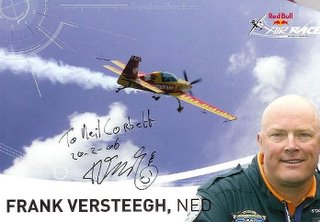
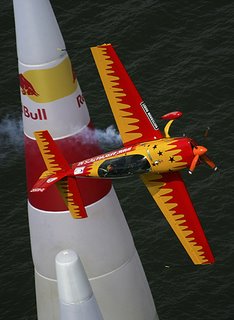
Frank Versteegh belongs to the top 5 aerobatic display pilots in the World. He started his flying career more than 30 years ago. Frank has been the Unlimited Aerobatic Champion for many years. He actively competed in Worldwide and European championships from 1982 till 1994.
He flew more than 1250 aerobatic displays at the World's major aviation events in all five continents. Frank is one of the selected pilots for the Red Bull Airrace and he participated in World's 1st Red Bull Air Race in Budapest and was 4th.
He has flown over 160 different types of aircraft, is holder of an unlimited display authorisation, multi engine-, helicopter and seaplane rating. Frank is airshow organiser, flight safety committee member, FAI judge, and still active in Free-style aerobatic competitions.
When Frank is not flying he is a key note speaker at seminars and co-producing aviation related TV-programs.
Tuesday, January 24, 2006
PÉTER BESENYEI
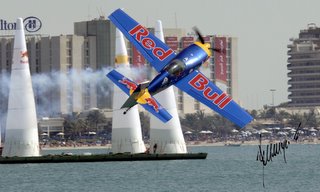
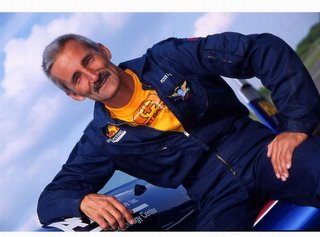
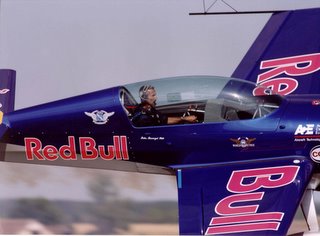
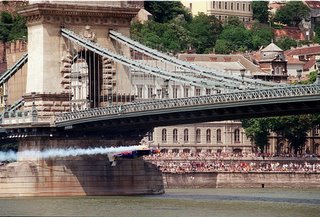
Péter Besenyei was born in June 1956. At the age of 20 he entered his first flying competition piloting a glider and immediately showed how talented he was by winning a silver medal. In 1982 he was the overall winner at the Austrian National Championships but this time he piloted a motor-driven plane and performed aerobatics.
The run of success continued in 1990 when Besenyei, piloting a plane that most people in the sport considered to be obselete, finished in second place in the World Aerobatics Championships. In 1993 the world-famous watch manufacturer Breitling attracted by the spectacle offered by the sport of aerobatics and by its increasing popularity organised a series of competitions that were known as the Breitling Aerobatics World Cup. The world’s top twelve aerobatics pilots were invited to compete and despite his having to fly in various aeroplanes borrowed from other people Besenyei finished in the first three. In 1996 the World Cup was succeeded by the FAI Aerobatics Grand Prix series, of which 1996-98 Péter Besenyei was the overall winner.
In 1994, flying his own plane, Besenyei won a gold and a bronze medal at the World Championships, and in 1995 at the European Championships he won 2 gold and 2 silver medals and was the most successful pilot. In addition to participating in competitions the Hungarian ace also works as a professional pilot, flying instructor and test-pilot passing on to others and making use of the vast experience that he has acquired over the years. He is the most successful Hungarian pilot of our time and experts consider him to be among the world’s top 3 aerobatics pilots.
In addition to his international successes Péter Besenyei has been Hungarian national champion 10 times and has won the "Sportsman of the Year" award 14 times. For the last 16 years he has been a member of the Hungarian national aerobatics squad. In 1996 Péter Besenyei was presented with the "President of the Republic's Gold Medal" by Árpád Göncz the President of Hungary.
Patty Wagstaff
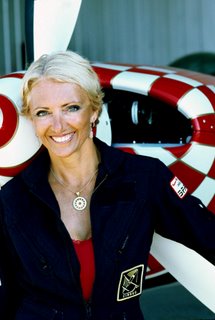
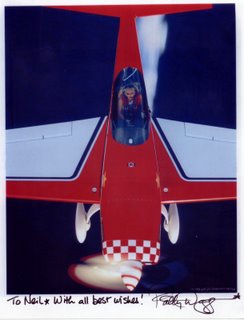
To Patty Wagstaff the sky represents adventure, freedom and challenge. A six-time member of the US Aerobatic Team, Patty has won the gold, silver and bronze medals in Olympic-level international aerobatic competition and is the first woman to win the title of US National Aerobatic champion and one of the few people to win it three times.
Patty flies one of the most thrilling, low-level aerobatic routines in the world. Flying before millions of Airshow spectators each year, her breathtaking performances give spectators a front-row seat view of the precision and complexity of modern, unlimited hard-core aerobatics. Her smooth aggressive style sets the standard for performers the world over.
Born in the USA, Patty grew up in and around airplanes. Moving to Japan when she was nine years old where her father was a Captain for Japan Air Lines. Her earliest memories include sitting with her father at the controls of his airplanes. At ten years old when her father let her take the controls of his DC-6, her lifelong love affair with airplanes began.
Though Patty was not raised to think of a career, her parent's supported her interests and encouraged her above all not to be fearful. From Japan her travels took her across Southeast Asia, Europe and to Australia where she lived and traveled up the west coast in a small boat. In 1979 she moved to Alaska and moved to a small town in the southwest, Dillingham, to work for the Bristol Bay Native Association where her job involved traveling to each of the remote villages in the region, areas only accessible by air.
Patty's first experience with bush flying was not a positive one: the same airplane she chartered crashed on its first flight. So Patty learned to fly herself, hiring friend and later husband, Bob, to travel with her in his Cessna 185 floatplane. Since then earned her Commercial, Instrument, Seaplane and Commercial Helicopter Ratings. She is a Flight and Instrument Instructor and is rated and qualified to fly many airplanes, from World War II warbirds to jets. Patty's sister, Toni, is also a pilot and a Captain for Continental Airlines..
Though she had never seen aerobatics, a lifelong curiosity led her to attend her first Airshow in Abbotsford, British Columbia in 1983, where she saw aerobatic pilots perform and promised herself "I can do that!" By 1985, five years after gaining her pilot's license, she earned a spot on the US Aerobatic Team.
Patty's skill is based on years of training and experience. She is a six-time recipient of the "First Lady of Aerobatics" Betty Skelton Award. In July 2004, Patty was inducted into the National Aviation Hall of Fame and was the recipient of the National Air and Space Museum's Award for Current Achievement in 1994.
Having received many awards for her flying, she is particularly proud of receiving the Airshow industry's most prestigous award, the "Sword of Excellence", and the "Bill Barber Award for Showmanship" Recently she was awarded a Lifetime Achievement Award from the Airforce Association, was inducted into the EAA/IAC Hall of Fame and in 2005 received the NAA/99's Katherine Wright Award.
For more info see www.pattywagstaff.com
Achievements
2005 Recipient, Airforce Association Lifetime Achievement Award
2005 Inductee, International Aerobatic Club Hall of Fame
2005 Katherine Wright Award
2002 Katherine and Marjorie Stinson Award
1998 Bill Barber Award for Showmanship
1997 Recipient, NAA Paul Tissiander Diploma
1997 Inductee, Women in Aviation International Hall of Fame
1997 Inductee, Arizona Aviation Hall of Fame
1996 Recipient, Charlie Hillard Trophy
1996 GAN & Flyers Readers Choice Award, Favorite Female Performer
1996 Top Scoring US Pilot at World Aerobatic Championships
1985-1996 Member, U.S. Aerobatic Team
1995 Recipient, ICAS Sword of Excellence Award
1988-1994 Winner Betty Skelton "First Lady of Aerobatics" Trophy
1994 National Air and Space Museum Award for Current Achievement
1994 NAA Certificate of Honor
1993 International Aerobatic Club Champion
Us National Aerobatic Champion 1991, 1992, 1993 US National Aerobatic Championships
1990/1992/1994 Top US Medal Winner, World Aerobatic Championships
1991 Voted Western Flyer Reader's Choice Favorite Airshow Performer
1987 Rolly Cole Memorial Award for Contributions to Sport Aerobatics
Michael Goulian
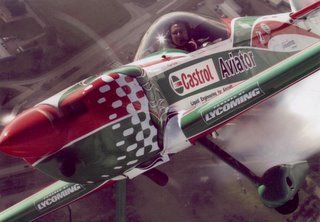 Michael started flying lessons in 1984 and soloed a Cessna 150 on his 16th birthday. Michael’s yearning to fly aerobatics was so strong that he began his aerobatic training in 1985 while still a student pilot. Once he became and aerobatic instructor, Michael established an aerobatic school within EFA using a Decathlon trainer, and supplemented his income as a corporate jet pilot while working his way toward the top ranks of air show display flying and competition aerobatics. Following a shower of regional titles he gained national recognition when at age 22 he became US National Champion in the Advanced Category. A year later he won the prestigious Fond du Lac Cup invitational competition and by 1992 he was the top ranked US male aerobatic pilot and Silver Medalist in the Unlimited Category, an achievement he repeated in 1993. His performance earned him a spot on the 1994 US National Aerobatic Team which represented America at the World Aerobatic Championship held in Hungary. In 1995 Mike reached the pinnacle of American aerobatics by becoming the US National Champion in the Unlimited Category. Not one to rest on his laurels, Mike has been a member of the 1994, 96, & 98 US Aerobatic Teams. Today, Mike focuses his attention on airshow flying and he is pushing the envelope with the goal of leading the industry to new heights entertainment and professionalism. For more info see www.mikegoulian.com
Michael started flying lessons in 1984 and soloed a Cessna 150 on his 16th birthday. Michael’s yearning to fly aerobatics was so strong that he began his aerobatic training in 1985 while still a student pilot. Once he became and aerobatic instructor, Michael established an aerobatic school within EFA using a Decathlon trainer, and supplemented his income as a corporate jet pilot while working his way toward the top ranks of air show display flying and competition aerobatics. Following a shower of regional titles he gained national recognition when at age 22 he became US National Champion in the Advanced Category. A year later he won the prestigious Fond du Lac Cup invitational competition and by 1992 he was the top ranked US male aerobatic pilot and Silver Medalist in the Unlimited Category, an achievement he repeated in 1993. His performance earned him a spot on the 1994 US National Aerobatic Team which represented America at the World Aerobatic Championship held in Hungary. In 1995 Mike reached the pinnacle of American aerobatics by becoming the US National Champion in the Unlimited Category. Not one to rest on his laurels, Mike has been a member of the 1994, 96, & 98 US Aerobatic Teams. Today, Mike focuses his attention on airshow flying and he is pushing the envelope with the goal of leading the industry to new heights entertainment and professionalism. For more info see www.mikegoulian.com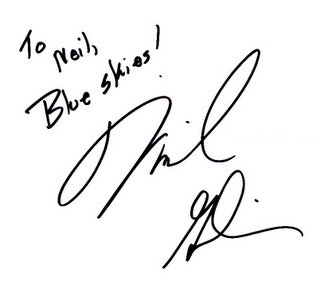
Monday, January 16, 2006
Dave Morss
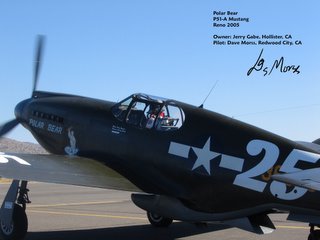
Dave is a two-time recipient of the Pulizter Aviation Award for speed records in Sport Class. He holds thirteen world speed records, ten of which stand. He has over 22,000 hours in over 300 different types of aircraft. He is the recipient of the Society of Experimental Test Pilots, Spirit of Flight Award for his accomplishments in testing. Dave started Myriad Research, a test flight business, in 1984. He has done first flights in 33 prototype aircraft. Dave has raced at the National Championship Air Races for 24 years competing in Biplane, Formula One, Sport Class and Unlimited. He is the three-time Sport Class Gold Champion.
For more info see www.davemorss.com
Friday, January 13, 2006
Betty Skelton (Frankman) 1926-2011
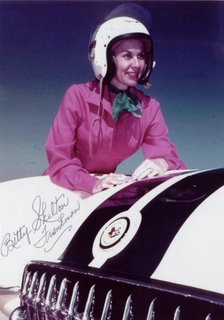 High-flying, fast-driving Betty Skelton (later Frankman) was born in Pensacola, Fla., in 1926. At age 12, she soloed in an airplane. By 1950, Ms. Skelton and her open-cockpit biplane, Little Stinker, were famous worldwide. From 1948 to 1950 she won three international aerobatics competitions for women.
High-flying, fast-driving Betty Skelton (later Frankman) was born in Pensacola, Fla., in 1926. At age 12, she soloed in an airplane. By 1950, Ms. Skelton and her open-cockpit biplane, Little Stinker, were famous worldwide. From 1948 to 1950 she won three international aerobatics competitions for women.One of her specialties was a maneuver known as "the inverted ribbon cut," in which she flew her plane upside down, 10 feet above the ground, and sliced through a ribbon stretched between two poles.
In 1949 and 1951 she set the world light-plane altitude record. In a car, she set the women's land-speed record three times at Daytona Beach, Fla., the last time being 1956 when she hit 145.044 m.p.h. in a Corvette (the men's record was only 3 m.p.h. faster). In 1951 she broke the North American transcontinental speed record for driving coast-to-coast from New York to Los Angeles, covering 2,913 miles in 56 hours 58 minutes (an average of more than 51mph). Two years later she crossed South America, from Buenos Aires to Valparaiso in Chile, in 41 hours 14 minutes.
In 1960, when the Mercury astronauts were making headlines, Look magazine asked Betty Skelton to undergo the same rigorous physical and psychological training regime ordained by Nasa. She passed every test, winning the respect of the seven Project Mercury astronauts, who nicknamed her “number 7½”. Betty Skelton set her last major land-speed record when she took a jet-powered car to a speed of more than 315mph at Bonneville in 1965.
She held more combined aviation and automotive records than anyone else - man or woman - in history.
